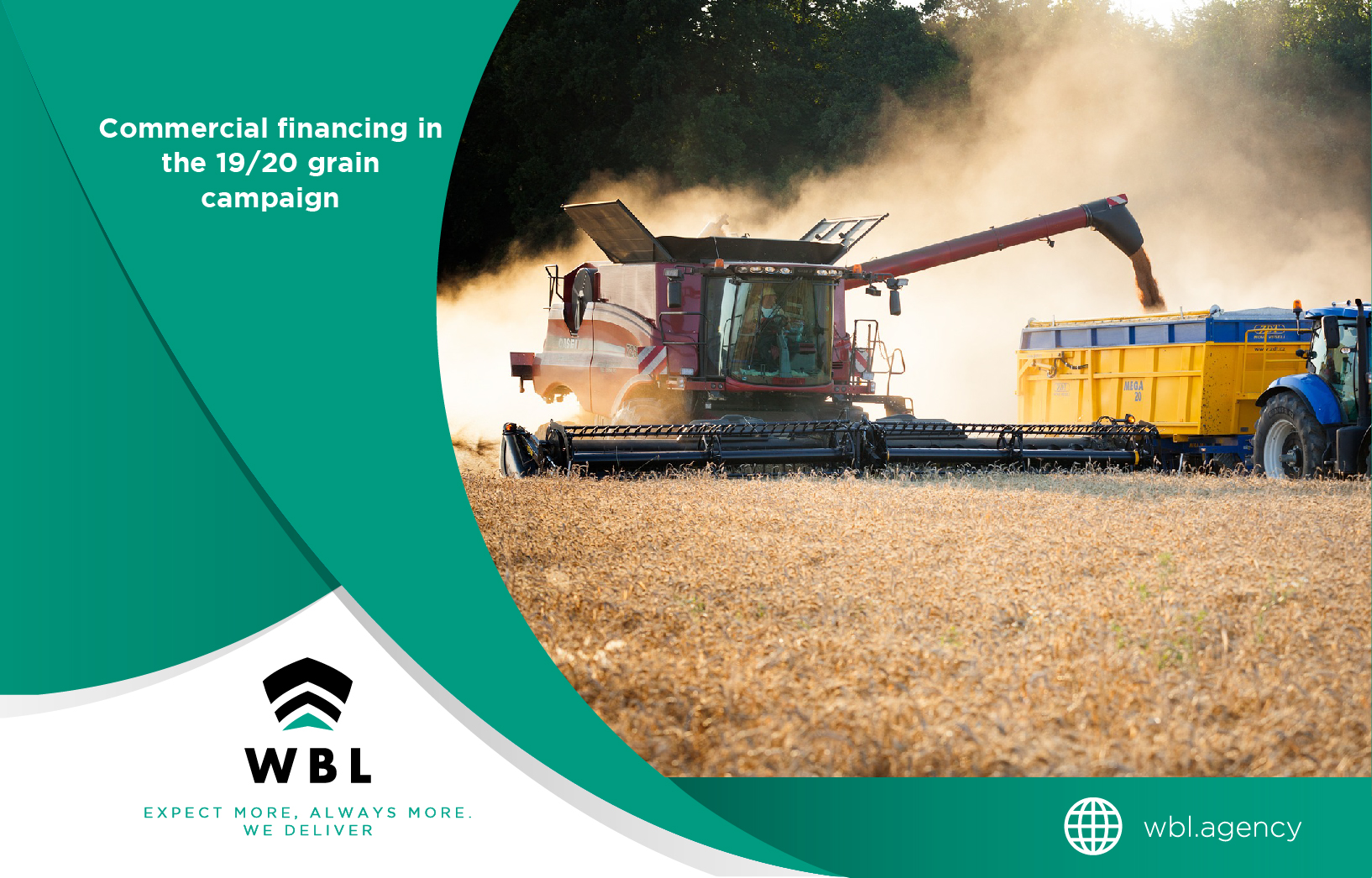Commercial financing in the 19/20 grain campaign
27% of the grains traded were negotiated in an exchange mode or with advance payment upon delivery, financing the 19/20 campaign. This is 3 percentage points (p.p.) lower than the previous season. Intra-sector financing is estimated at 3.655 billion dollars.
To analyze the financing of the 19/20 campaign, the data available was processed from the SIO-Grains platform up to August 31, 2020. Based on these values was calculated the number of tons sold in contracts with various payment methods and types of operation indicated as vintage 19/20. Thus, it is estimated that 32% of the soya marketed by the sector was used to finance the producer for the 19/20 crop. This value was 28% for corn and 19% for wheat. In total, 27% of the grains sold were used as direct financing to the producer in the 19/20 campaign. This value has fallen 3 percentage points (p.p.) compared to the previous campaign. This decrease in intra-sector financing can be explained by the lower prices of grains in general and the lower real interest rates, which make the credit lines of the financial sector more attractive.
It is considered that the payment methods by exchange and advance payment on delivery, make up the commercial financing destined to the producer in a determined commercial season. This financing is intended for working capital and the purchase of the machinery necessary to carry out the planting and cropping in the mentioned cycle. The problem with the following methodology is that we cannot split the financing destined for the purchase of machinery (fixed capital) from the inputs, included in the exchange of grains and in the advance payment on delivery. Therefore, the calculation that is made considers the commercial financing destined for both items in the 19/20 commercial year. If we take the values calculated at 8.75 million tons (Mt) for maize, 8.62 Mt for SB, and 3.1 Mt for wheat and multiply this value by the domestic price of each product (value of the production calculated at FAS value), total intra-sector financing of the order of 3,655 million dollars is obtained.

Data and description of the methodology
In the SIO-Grains database, the buyer of the merchandise can be categorized as an intermediary or final consumer. If the grain is to be consumed as an input in the production of by-products or if the grain ends up being exported, the buyer is classified as the final consumer. The rest of the buyers are called non-final consumers or, as we call them in this case, intermediaries.
The categorical importance of the final consumer can be observed in contracts with advance payment on delivery. Exporters or cooperatives play an important role in this. These sector actors have a greater debt capacity, which allows them to carry out these operations, financing the producer’s inputs through the advance payment of the grains. Regarding the total of the final commercialization, the advance payment on delivery reaches 6% in corn, 12% in SB, and 4% in wheat. These values have fallen significantly compared to last season.
On the other hand, there are marketing segments where there is a change of hands and the power of the merchandise is held by intermediaries or final consumers. These segments are: the grain exchange contract and the purchase and sale contracts (forward and on delivery).
To take the financing of the producers, the exchange contracts made by both the intermediaries and the final consumer segment are taken. It is assumed here that the exchange business in intermediaries is replicated in a payment-on-delivery operation to a final consumer. If we want to measure the financing of the producer, both the total exchange of intermediaries and the exchange with final consumers are used, since it is assumed that producers are involved almost entirely from the supply side. The exchange of corn reached 22% of the total of the final commercialization, the exchange of SB reached 19% of the total, and wheat is commercialized in an exchange mode at 15% compared to the total.
Adding the volume of contracts with advance payment upon delivery and exchange contracts, both for intermediaries and final ones, it is estimated that 28% of the commercialized SB were destined for the direct financing of the producer. This value was 32% for corn and 19% for wheat.
To take the financing of the producers, the exchange contracts made by both the intermediaries and the final consumer segment are taken.
If we compare with the 18/19 campaign, commercial financing (in relative terms) was slightly below, which indicates that this year there was less producer financing from the sector. In the previous season, there had been an increase in intra-sector financing due to the drought of 2018, which had reduced the working capital of producers. This had generated the fact that the producers had to go out to fund a higher percentage with commercial credit. Also, the increases in interest rates had made producers have to resort to a lesser extent to bank credit and more to exchange and financing contracts by exporters.
Both in relative and absolute terms, the drop in financing was significant in the prepayment-on-delivery segment. This may be due to the lower financing obtained by the export sector from August 2019 to date. Due to the lower domestic credit in dollars to the export sector, there is a lesser possibility of granting advance financing to the producer, which also helps to explain the fall in the financing of the sector to the agricultural producer in the 19/20 campaign and mainly on the item.
WBL Shipping Agency
For more news follow us on LinkedIn
